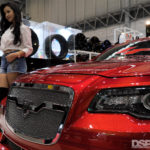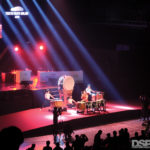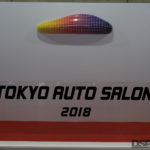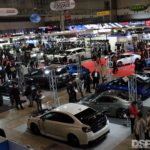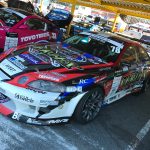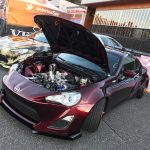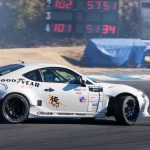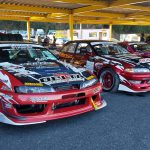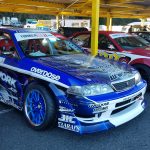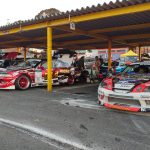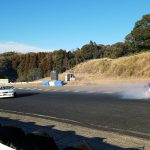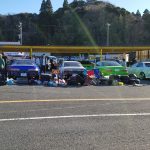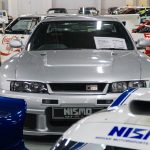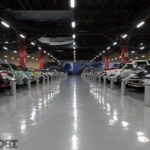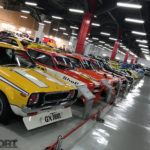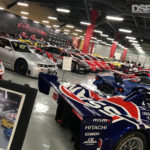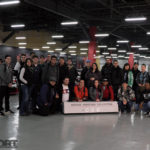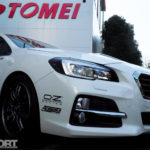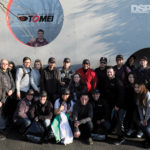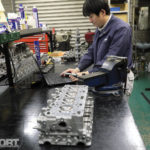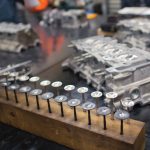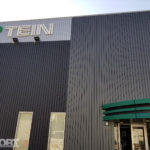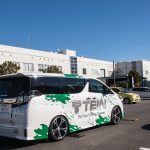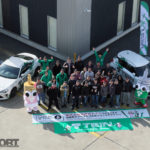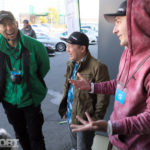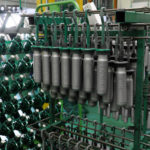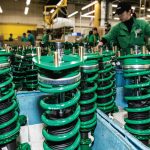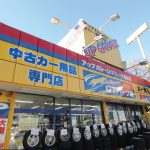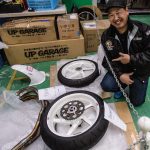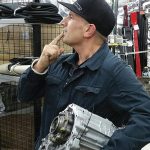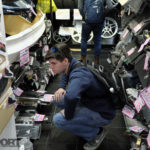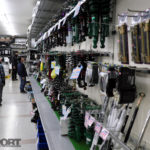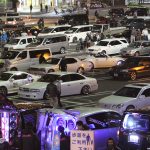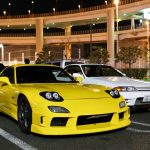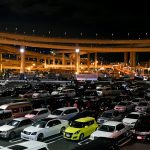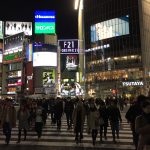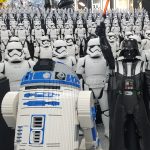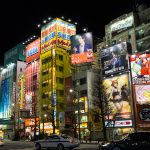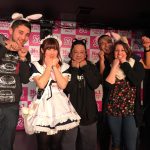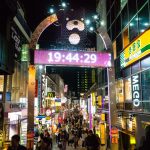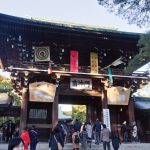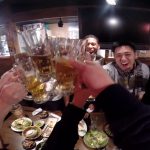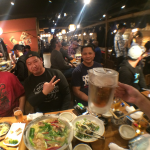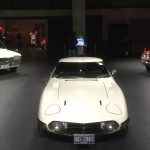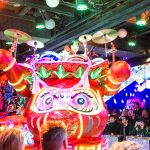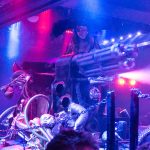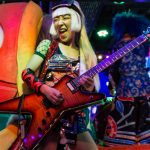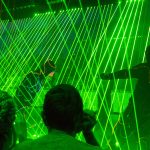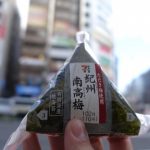The Tokyo Auto Salon Tour consists of experiencing the very best in automotive, culture and food that Japan has to offer. Use our guide below to get a taste of what a trip with DSPORT is like. You won’t truly understand how much fun the tour is until you experience it yourself. Click the link to reserve your spot today!
Automotive
-
Nissan Heritage Garage
-
Tokyo Auto Salon
-
DSPORT Tuner Challenge
-
Tomei Powered Facility Tour
-
UpGarage Visits
Culture
-
Akihabara
-
Daikoku Futo Car Park
-
Harajuku
-
Izakaya
-
Odaiba
-
Robot Cafe
-
Shibuya
Food
-
7-11 Treats
-
Ramen
-
Sushi
-
Tempura
-
Tonkatsu
-
Yakiniku
Tokyo Auto Salon
The mecca for the best and latest in JDM tuning. We arrive early and first check out some of the streetcar builds in the parking lot. By 9am, our VIP passes will get us in with the press to be the first to see the stars of the show. For four hours, our group has the opportunity to check out the show before the massive influx from the opening to the general public ticket holders. This is the time to get the best shots of the cars, parts and models. Once the doors open to the general public, the aisles are filled with thousands of Japan’s aftermarket car enthusiasts eager to see the best collection of JDM cars in the world.
DSPORT Tuner Challenge
Included in the DSPORT Tokyo Auto Salon Tour is our competition track event in Japan: the DSPORT Tuner Challenge. Last year we teamed up with T&E VERTEX to give you an opportunity of a lifetime. Tour members get ride alongs in pro D1 drift cars around the famed Mobara Circuit. Then the pro drivers compete in a drift competition and grip car sessions right in front of us. Throughout the day, you’ll be able to meet and greet with your favorite drivers such as Takahiro Ueno of T&E VERTEX. This is your chance to get up close and personal with D1 and FD Japan cars on the same track at the same time!
Nissan Heritage Garage
On the first day of the tour you’ll take an exclusive trip to the Nissan Heritage Collection at the Zama facility, home of the Nissan DNA Garage. Although this facility is not open to the public, Nissan has graciously welcomed the DSPORT TAS Tour to visit each year. With examples ranging from the earliest machines, like 1930s Datsun models, Prince Skylines from the 1960s and Nissan’s S30 Fairlady Zs up to today’s R35 GT-R, over 400 vehicles chronicled the company’s long and illustrious history. Numerous racecars that Nissan campaigned in a variety of disciplines, from rally to Super GT, are also displayed, along with rare machines like a one-of-a-kind, street-legal R390 GT1 Le Mans and a widebody R33 Skyline GT-R LM. Some Nissan engineers and other staff are on hand to serve as tour guides during our walk through Nissan’s history. These knowledgeable individuals share interesting facts, details and the background of key vehicles in the collection, helping us to understand why the cars were built the way they were.
Mari Car
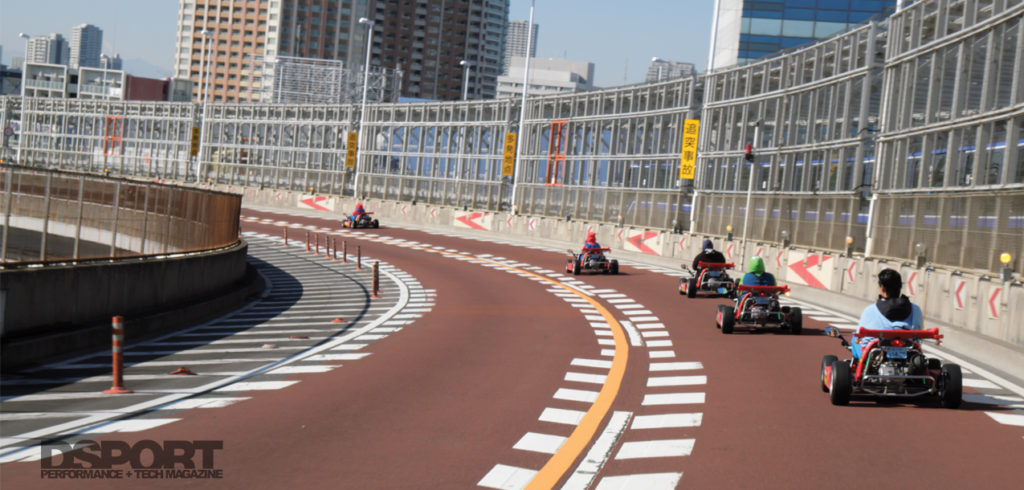 There is no better way to tour Tokyo, Japan than on Mari Cars. If you’ve played the Mario Kart game, this will all look familiar to you. Everyone gets to dress in a Mario character outfit, get in a Mario Kart, and follow the tour leader through the streets of Tokyo.
There is no better way to tour Tokyo, Japan than on Mari Cars. If you’ve played the Mario Kart game, this will all look familiar to you. Everyone gets to dress in a Mario character outfit, get in a Mario Kart, and follow the tour leader through the streets of Tokyo.
Once you are driving down the famous Rainbow Bridge on a Mario Kart at 50 mph, you’ll know why this is an experience that you will never forget. The Mari Car experience takes over two hours of driving with two quick breaks. This is a once-in-a-lifetime experience, until the next DSPORT Tokyo Auto Salon Tour.
Tomei Powered
The TAS tour makes its way over to TOMEI Powered. There, Yuki Sakurai and Tomo Hayashi walk you through the facility, showcasing TOMEI’s various divisions including engineering, camshaft grinding, engine building and engine testing. They usually have on display several demo cars, including last year’s R32 Skyline GT-R, an S13 convertible, Kenji Yamanaka’s 1JZ-powered JZX100 Mark II, a supercharged FR-S, Yuki’s WRX and a Datsun Sunny. While half the group gets escorted through the TOMEI Powered facility, the rest can take a quick walk around the corner to UpGarage to do some second-hand parts shopping.
TEIN Factory Tour
A short bus ride leads us to the TEIN factory in Yokohama. After dividing into several groups, each gets escorted through the manufacturing plant, where casings are, dampers assembled and final products are packaged for shipment to consumers. Precision CNC machines fill the facility with activity while robotic welders keep the sparks flying. Several cleanroom environments with picture windows give you a clear view into the process that TEIN employs when assembling its dampers. Outside the factory, a demo van equipped with TEIN suspension takes each group around the parking lot on a route fitted with varying sizes of speed bumps to show how the spring and damper settings affect the ride characteristics of a vehicle. After the factory visit was over, TEIN usually treats the entire tour group to a delicious lunch such as sushi or tempura.
UpGarage
UpGarage is famous for its second-hand performance parts and bargain prices. In our past tours, attendees walked away with a variety of parts, from headlights and taillights to Recaro seats. Just last year, DSPORT publisher Michael Ferrara made off like a bandit. He uncovered an out-of-production HKS 3037 1.01 a/r turbine housing worth US$400-500 for only US$5. He also found a rare and hard to find US$7,600 GT-R transfer case for only US$80. Feature editor Richard Fong found a set of Marchesini magnesium motorcycle wheels mounted with lightly used Bridgestone Battlax tires for US$950 shipped to America. The wheels alone retailed for over US$3,000. A special agreement with Up Garage made all of the purchases duty free, while the company’s international shipping division, Croooober, was available to help facilitate the transportation of bulky items back home.
Daikoku Futo Car Park
As if a full day at the Tokyo Auto Salon isn’t enough, we take our tour bus to the renowned Daikoku Futo Car Park. This spot has become the most famous car meet location in all of Japan, dating back to the early ’90s when underground street racing crews would meet there before racing. Today, the Daikoku Futo continues to be a late night meeting spot for more than just street racers. It’s practically a motorsports extravaganza attracting a diversity of vehicles ranging from performance cars to box mini vans with walls of subwoofers and screens. In earlier years, Daikoku was often the staging point for street racing but this has ceased in recent years due to increased police activity. Daikoku is still, however, the place to come if you’re in the Yokohama or Tokyo areas and want to see some of Japan’s most incredible cars. If you’re a fan of everything JDM, then you’re a fan of Daikoku.
Shibuya
Shibuya (渋谷) is one of the twenty-three city wards of Tokyo, but often refers to just the popular shopping and entertainment area found around Shibuya Station. In this regard, Shibuya is one of Tokyo’s most colorful and busy districts, packed with shopping, dining and nightclubs serving swarms of visitors that come to the district everyday.
Shibuya is a center for youth fashion and culture, and its streets are the birthplace to many of Japan’s fashion and entertainment trends. Over a dozen major department store branches can be found around the area catering to all types of shoppers. Most of the area’s large department and fashion stores belong to either Tokyu or Seibu, two competing corporations.
A prominent landmark of Shibuya is the large intersection in front of the station’s Hachiko Exit. The intersection is heavily decorated by neon advertisements and giant video screens and gets flooded by pedestrians each time the crossing light turns green, making it a popular photo and movie filming spot.
Akihabara
Akihabara, also known as “Electric Town,” is the mecca of cheap electronics and gadget goodness. Just a short walk from the subway station, the main street is lined with tall buildings covered in colorful ads depicting sales and anime characters. There are names you’ll recognize, like Sega, and many you definitely won’t. These stores are only part of the area’s electric charm. Take a turn onto one of the side streets, and smaller stores hawk far more specialized wares. Better still, enter one of the side buildings. Alleyways transition invisibly to corridors. Tiny shops focus on one microscopic niche of the electronics world. Need a new switch for your old VCR? How about a single LED for a DIY project? Fuses, cables, random parts you’ve never seen before? You can probably find one here.
The narrow alleys and corridors are reminders of a modern-day Japanese Kowloon Walled City, with turn after turn, stairway after stairway, and just endless stalls and stores. More than just selling the content, stores popped up to speak to the otaku themselves. There’s the Gundam Cafe, for example. Go to Akihabara in the evening, and an even more obvious example of a quirk of the otaku culture will appear. Every few stores will have a young woman outside, dressed as a maid or an anime character, handing out fliers for drink specials. Maid cafes are essentially hostess bars, a sort of Hooters without the revealing clothing…and with cosplay instead.
Akihabara is one of the best areas to see Tokyo do what it does best: condense a whole lot of something into a small space, and add a dash of madness.
Harajuku
Harajuku is a significant fashion and shopping district, but it also includes Tokyo’s most popular shine, Meiji Jingu Shrine and one of the most significant parks in Tokyo: Yoyogi Park. There is even a fashion style named after the district that features some extreme clothing and hairstyles. The district is located in the ward (city) of Shibuya and normally refers to the area around Harajuku Station and down Omotesando (street leading to Shrine).
The focal point of Harajuku’s teenage culture is Takeshita Dori (Takeshita Street) and its side streets, which are lined by many trendy shops, fashion boutiques, used clothes stores, crepe stands and fast food outlets geared towards the fashion and trend conscious teens.
Just south of Takeshita Dori and over twice its length is Omotesando, a broad tree lined avenue sometimes referred to as Tokyo’s Champs-Elysees. Here you can find famous brand name shops, cafes and restaurants for a more adult clientele. The stylish Omotesando Hills complex was opened in 2006 and targets fashion conscious urbanites in their 30s and 40s, while Kiddy Land has hundreds of unique toys for kids of all ages.
Harajuku is not only about teenage culture and shopping. Meiji Jingu, one of Tokyo’s major shrines, is located just west of the railway tracks in a large green oasis shared with the spacious Yoyogi Park. Beautiful ukiyo-e paintings are exhibited in the small Ota Memorial Museum of Art, and the Nezu Museum has an impressive collection of various Asian art as well as a traditional Japanese garden.
Izakaya
For the party tour attendees, going to Shibuya is the main social event of the trip, the DSPORT Izakaya Experience. An izakaya is a sort of beer bar where, for 3,500 Yen (roughly US$30 at current exchange rates), you can eat and drink as much as you can during a two-hour period. This event really cemented some new friendships and fortified existing ones over endless pitchers of beer or glasses of highball. The food wasn’t too bad either. While some returned to the hotel to recover, others went on to different clubs in the area to party into the early morning.
Odaiba
Odaiba is a large artificial island in Tokyo Bay, Japan across the Rainbow Bridge in central Tokyo. It was initially built for defensive purposes in the 1850s, dramatically expanded during the late 20th century as a seaport district, and the area has started to come back to life in the late 1990s as a tourist and leisure zone. Odaiba will also be one of the venue locations in the 2020 Summer Olympics. Situated inside Mega Web is the Toyota City Showcase. This area features a history garage, restoration garage and several different ride simulators .
Robot Cafe
Every night in a basement in Shinjuku’s Kabukicho district, bikini-clad women stage mock battles using enormous robots – though it’s more steroid-enhanced fairground attraction than modern-day Gundam. Fitted out at a cost of ¥10 billion, Robot Restaurant looks like something straight out of Gaspar Noé’s Enter the Void, all migraine-inducing neon, video screens and mirrors (and if you think that’s bad, just check the website). Customers pay a ¥7,000 charge, but the Bubble Era comparisons end there. Rather than massively marked-up Ballantines and Beaujolais Nouveau, the drink menu only extends as far as canned beer, chu-hai and bottled tea, sold at the kind of prices you’d expect at a baseball game. The entry fee also no longer includes a bento box – though as you’d find tastier fare in an average convenience store, it’s no big loss. There are four 90-minute shows each night, in which the nubile staff take to the floor on giant robots, including a neon tank and enormous female ‘borgs – complete with (literally) pneumatic busts. When Time Out visited, the customers seemed a little too gob-smacked to know what to do at first, but by the end they were waving their glowsticks like hardened para-para dancers. Give it a chance, and you might find yourself doing the same thing too.
7-11






